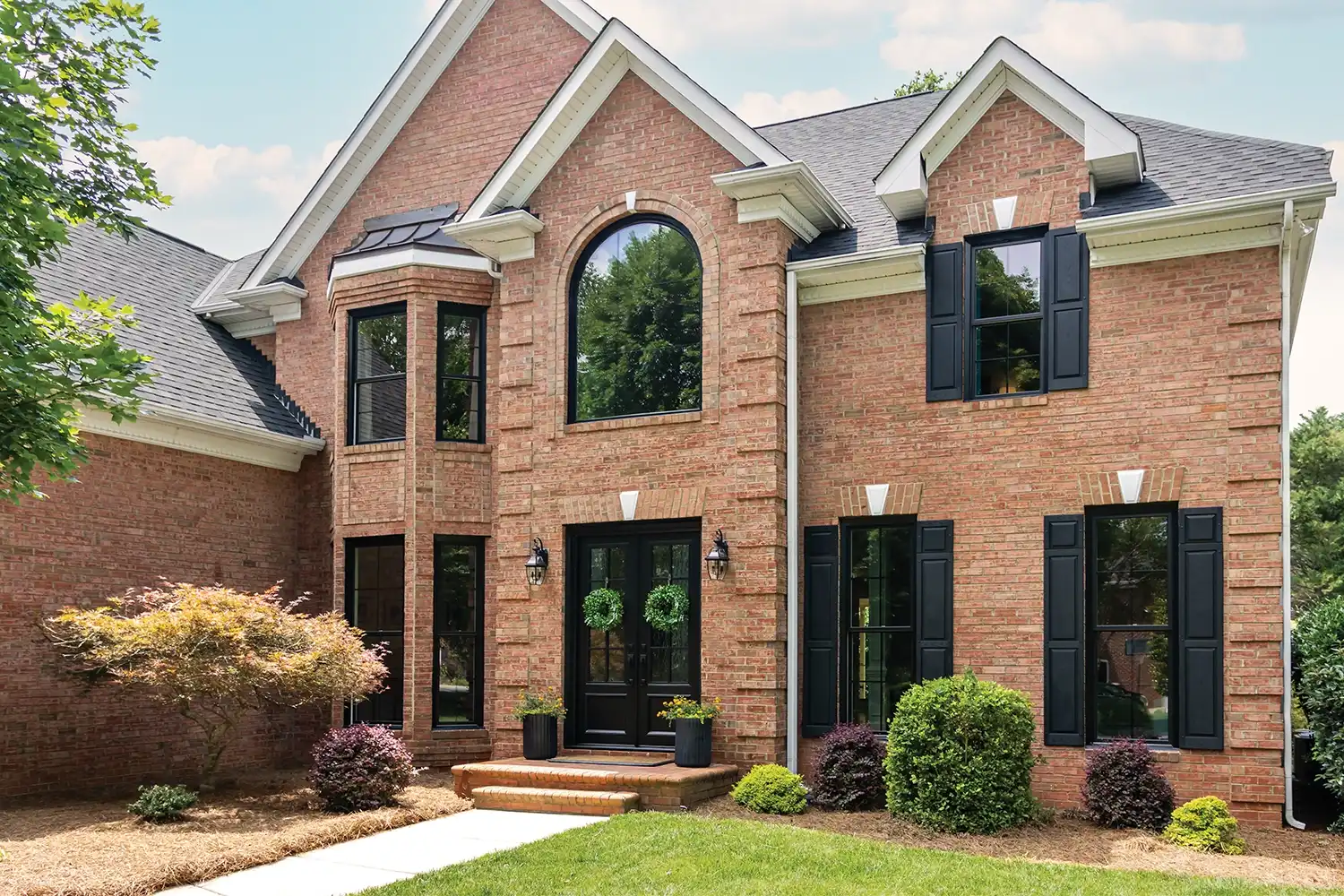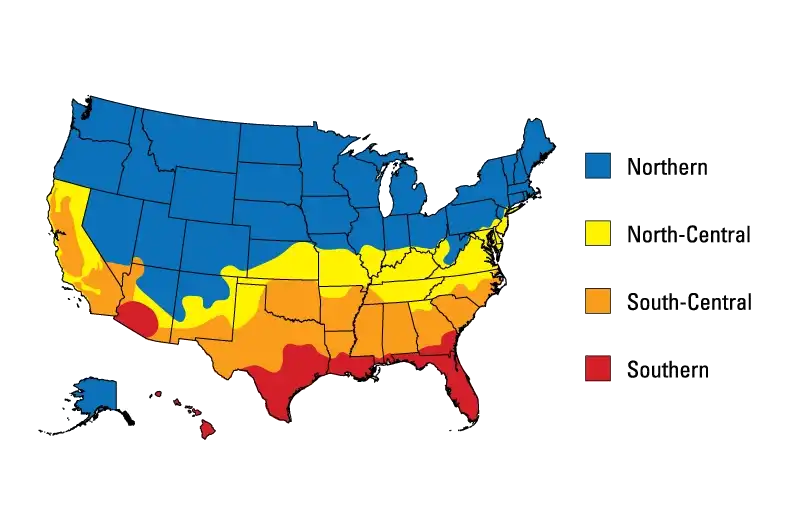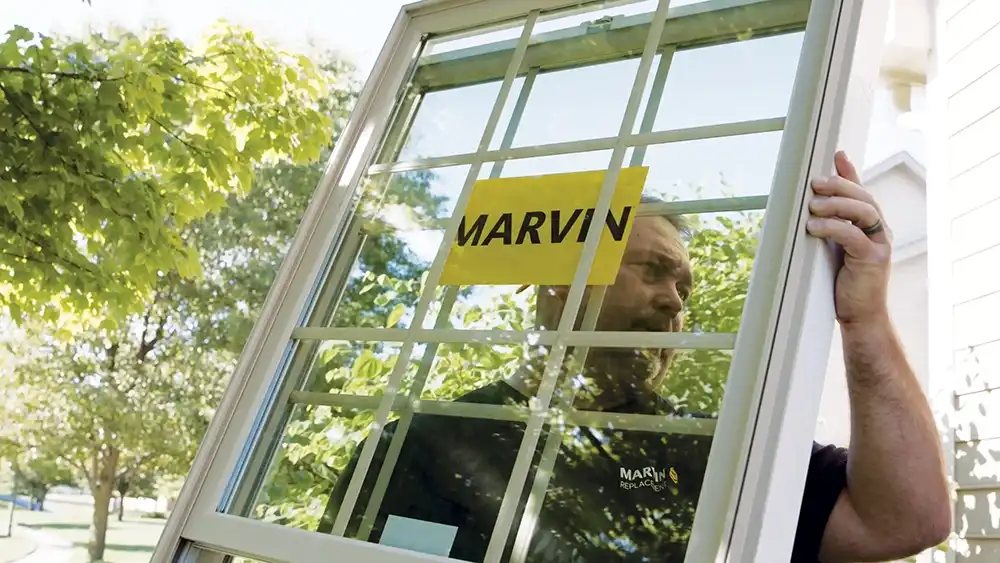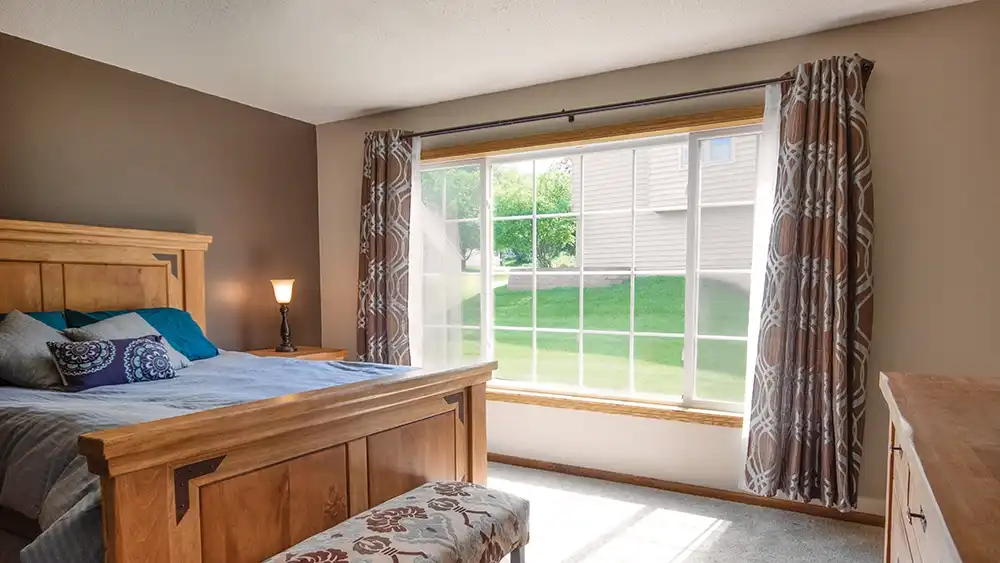
24 August 2023
Choosing the Best Windows for Hot or Cold Climates
If you live in a cold, snowy area you’d like to keep your home cozier. If you live in a hot climate, you want to keep your home cooler. Your windows can help make your home more comfortable. Here’s how to pick the best windows for your climate.
Best Windows for Your Climate
Knowing the glass glazing options and ratings to follow can help you make an informed decision on windows. Plus, Marvin Replacement’s Ultrex® fiberglass has better insulation than aluminum. That means it can help keep heat and cold out of the home.
Marvin Replacement’s Ultrex fiberglass windows, when paired with the ideal glass coating for your climate, may improve your home’s energy efficiency.* A Marvin Replacement design consultant can review your specific climate needs to find the right window and glass option for your home.

How Windows Get Rated for Performance in Different Climates
Windows get measured by performance window labels from the National Fenestration Rating Council. A window label includes: U-factor, SHGC, Visible Transmittance, and Air Leakage ratings. All which can help you find the best windows for your climate.
Window U-factor
U-factor measures how well a window keeps heat in your home and range from 0.10-2.00. A higher number allows more heat to escape.
Window Solar Heat Gain Coefficient (SHGC)
The SHGC measures how much heat from the sun enters a room. In a warmer climate, you’ll want a window with a lower SHGC number. Lower SHGC numbers reduce cooling costs. Higher SHGC numbers can reduce heating costs. SHGC numbers range from 0.00-1.00.
Window Visible Transmittance
Visible transmittance (VT) measures how much natural light enters your home. VT can help homeowners change their indoor lighting use by relying more on natural light. VT numbers range from 0.00-1.00.
Window Air Leakage
Air leakage ratings measure how much air will enter a room through a window. Air leakage rates of ≤ 0.3 mean fewer drafts.

Best Windows for Pacific Northwest Climates
Specific types of windows suit the Pacific Northwest better than others because of the cool, damp climate. Ultrex resists warping and weathering in any climate. That's important if you live in a rainy climate like Seattle or Portland, Oregon.
U-factor and SHGC recommendations
The Pacific Northwest falls into the Northern region of the ENERGY STAR® Climate Zone Map. It suggests windows with:
A U-factor of 0.27 or less (any SHGC allowed) or
A U-factor of 0.28 and SHGC of 0.32 or more or
A U-factor of 0.29 and SHGC of 0.37 or more or
A U-factor of 0.30 and SHGC of 0.42 or more
Windows with U-factors of 0.30 and less will keep more heat in. Windows with a higher SHGC number can help reduce heating costs, according to the Department of Energy.
Best Windows for Southwestern Climates
The Southwest, which includes Arizona, New Mexico, and California, experiences direct sunlight. The region needs windows that can help reject solar heat to keep cooling costs down and decrease stress on your air conditioner.
The Southwest encompasses all four ENERGY STAR® climate zones. Be sure to use the climate zone finder to get the best information about your climate zone.
U-factor and SHGC recommendations
Higher U-factors
Lower SHGC numbers typically work best in the Southwest
Glass with Low E3 or Low E3/ERS can block more solar heat and UV rays
Best Windows for Midwestern Climates
The Northern region, like Chicago and Detroit, has extremely cold, snowy winters. This means harnessing the sun to keep your home warm by keeping more of its heat inside.
U-factor and SHGC recommendations
U-factors of 0.30 or less
SHGCs of 0.32 or more
Best Windows for Northeastern Climates
The cold and wet Northeast climate falls into the Northern climate zone in the ENERGY STAR® Climate Zone Map. The zone includes cities like Boston and New York state
U-factor and SHGC recommendations
U-factors of 0.30 or less
SHGCs of 0.32 or more
Best Windows for Southeastern Climates
The Southeast includes the Southern and South-Central regions in the ENERGY STAR® Climate Zone Map. Consult the climate zone finder to find information specific to your county. Areas in the South-Central climate region include Charlotte, North Carolina.
U-factor and SHGC recommendations
U-factor of 0.30 or less
SHGC number of 0.25 or less.
Best Windows for Southern Weather
The Southern climate region includes Austin and Dallas. It faces higher temperatures and more direct sunlight. The low expansion rate of Ultrex fiberglass, paired with our energy efficient glass options makes it great for Southern homeowners. Plus, Ultrex fiberglass will not melt or lose its shape, even when exposed to temperatures of up to 285° F. Vinyl can start to soften and melt at 163° F.
U-factor and SHGC recommendations
U-factors of 0.40 or less
SHGC numbers of 0.25 or less
Window Glass Coatings
Thin coatings of special low emissivity (Low E) metallic material get applied to glass panes to boost energy efficiency and block out UV rays. Low E has a number following the “E” to shows the number of coatings.
Marvin Replacement’s types of window glass include: Low E1, Low E2, Low E3, and Low E3/ERS coatings
Our Low E3 and our Low E3/ERS glazing work well in hot and sunny climates because they will block solar heat. A Low E3 window will block up to 95% of UV rays.
Low E1 glass glazing works best in colder climates. It allows more heat in to warm a room while blocking heat loss.
Low E2 works well in moderate climates because it can help keep heat in winter and reject heat in the summer. It blocks 84% of the sun’s UV rays to reduce color fading.
How Can I Improve My Energy Performance?
If your windows are old, the best way to improve energy performance is replacement windows. Old windows lose energy efficiency as caulk deteriorates or weatherstripping starts to fade. Additionally, replacing old single-pane windows with double-pane windows can boost energy efficiency.1
1 Savings reflect installing ENERGY STAR certified products compared to non-certified when replacing single pane windows based on the average savings among homes in modeled cities. Actual savings will vary by product type, location, method of installation, individual home characteristics, local climate and conditions, utility rates, and other factors.
*Map via ENERGY STAR
Back to All Articles
You May Also Like

Types of Window Glass
There are several types of window glass and options to choose. Learn how specific types of glass can benefit your home. Marvin Replacement can tailor glass options to fit your home the best.
Window Glass Types
When to Replace Your Windows
On installation day, our team of Marvin Replacement Certified Installers will arrive at your home to remove your old windows and install your new ones.
When to Replace Windows
Ways to Reduce Energy Loss with Windows
The U.S. Department of Energy estimates that 30% of a home’s heating energy is lost through windows while 76% of sunlight that falls on standard, double pane windows turns into heat during the summer.
Ways you can save